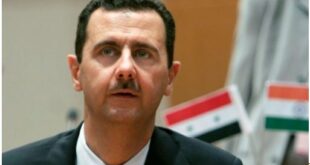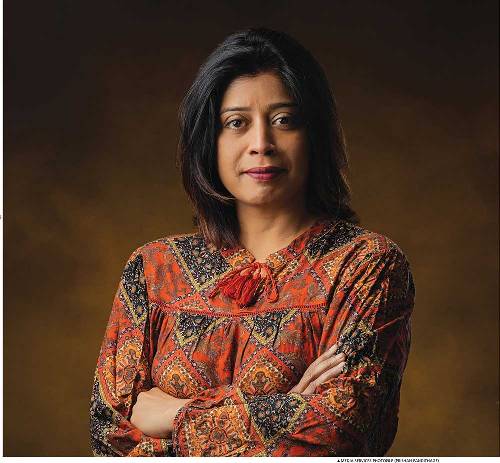The statement of Nicholas Sarcozy that Burqa is not welcome in France, that it is a symbol of oppression and not of religion has raised serious debate all over. It is France again where five years ago the display of religious markers, head scarf, Sikh turban, and Jewish skull cap in schools was banned. Public servants cannot use the same in place of work.
France as a secular state has adopted a particular version of this policy. France has been setting example for some of the countries in this imposing type of secularism, like Turkey. It has another dimension and that is large number of poor Muslims coming here are from its old colonies who live in very abysmal conditions. One recalls a large section of these immigrant Muslim population lives in suburbs, poor localities in economic deprivation. A couple of years ago right here some Muslim youth began a series of violent acts out of frustration due to unemployment and poverty. The cultural economic differences between these sections are very wide and urban affluent ones’ are very gross.
How is secularism to be implemented? One way is that social situations are transformed and the hold of feudal elements is done away with and state encourages the society to adopt the norms of social and gender equality. And with this, the symbols of gender inequalities start receding in the face of changing social situation. There is no uniform pattern in this. Even after the democratic regimes come to being formally, many an old norms take time to vanish. Surely there are some of these which have to be done away by strong legislation. In India during freedom movement forcible prevention of Sati, burning of wife after husbands’ death, had to be resorted through legislation.
Burqa has not been the mandatory part of Koranic teachings. Here the emphasis is on dressing modestly. In earlier societies and other societies also, different dress codes have imposed on and also adopted by women, some as honor and more of them to impose controls on them. Dr. Zeenat Shaukat Ali, a noted Islamic scholar points out that long before the advent of Islam, veiling and seclusion appear to have existed in Hellinitic-Byzantine era, and also amongst Sassanians of Persia. In ancient Mesopotamia veil of women was regarded as sign of respectability and status.
During feudal times, the patriarchal norms were operated in the society through the institution of religion. With persistence of patriarchy the women were made to wear the identity markers in different cultures and societies. Stronger the patriarchal norms, stronger the social presence of clergy, stronger is the imposition of identity markers. These may be Ghunghat, (India) head scarf in different cultures and burqa amongst Muslims. From the beginning of twentieth century, the status of women started improving slightly and women started coming to social space. By 1980s in many a Muslim majority countries also women came to their own and prevalence of burqa came down, and at places totally done away with. The situation started worsening with the Global War on terror at world level and with communal violence in India intensifying.
With so called ‘war on terror’ the intimidation of Muslim communities’ world over started worsening. With this orthodox and conservative sects in Islam came to fore. Fundamentalist tendencies like Taliban propped up at places and worsened the situation by giving sense-less fatwa’s and dictates. Taliban imposed the norms in most inhuman way. The sense of insecurity in the wake of war, invasion of Afghanistan and then Iraq increased the sense of insecurity and the consequent hold of conservative sections, who generally impose such restrictive norms on women increased. Still in many a countries, where the women enjoyed a safe and secure social condition, the use of burqa came down. If we have a look at global scene we will find great amount of diversity in this matter. Broadly one can say, more the insecurity, more the hold of orthodoxy more the burqa.
In India one can see a great diversity in the use of the same. In Kerala it was not much in use and in Kashmir it was practically absent. In Kerala its use started going up with the rising communal violence of the decade of 1980s and with the rising influence of Wahabi Islam through those taking up jobs in Gulf region. In Kashmir the rise of militancy after 1990, the communalization of the Kashmir issue, led to rise of conservative sections who wanted to impose the veil, but Kashmiri women held there ground and resisted the same.
Also lot of misconceptions have been constructed around Islam, Burqa and local traditions. Recently India’s President, Mrs. Pratibha Patil stated that the Ghunghat in Rajasthan has been introduced due to the fear of Muslim kings, to protect women from their atrocities. One can ask those arguing on these lines, how did Sati come into being? Can hiding the face protect women or make them more vulnerable to atrocities? Sati, Ghunghat etc, have been more a mark of patriarchal values than due to the impact of Muslim Kings. Even today Ghunghat persists not because of the fear of Muslims but the strong hold of patriarchal values. The occasional cases of Sati also fall in that category. Bal Thackeray of Shiv Sena came for a strong praise of Sarcozy for his stand on Burqa. The same Shiv Sena has been intimidating girls on Valentine day off and on and giving the fatwa that girls should not wear Jeans. What a case of crass double standards!
The social and political situation leads to the social psychology and individual psychology of women is shaped around that. Men have held the sway in dictating such norms, and social situation is created where women internalize these norms. The Sufi tradition of Islam was not for the use of burqa. There are two essential points which the rulers have to keep in mind. One is that the very basis of democracy is freedom and liberal space. The countries like Saudi Arabia impose burqa. The countries like France want to do away with the same through a dictat. What is the difference? Secondly the point today is to see that globally and within the nation states the minorities are given the feeling of security, they are provided with situations leading to equity. These will ensure that the identity issues will take the back seat. Today the communities where security is the issue, equity is eluding the community, identity becomes the major rallying point. Just the statement about identity markers, without changing the social situation leading to such phenomenon is a hollow move.
Post Disclaimer | Support Us
Support Us
The sailanmuslim.com web site entirely supported by individual donors and well wishers. If you regularly visit this site and wish to show your appreciation, or if you wish to see further development of sailanmuslim.com, please donate us
IMPORTANT : All content hosted on sailanmuslim.com is solely for non-commercial purposes and with the permission of original copyright holders. Any other use of the hosted content, such as for financial gain, requires express approval from the copyright owners.
 Sri lanka Muslims Web Portal Sri Lanka Muslims News Center
Sri lanka Muslims Web Portal Sri Lanka Muslims News Center




I find this extremely interesting.It explains the increasing resort to the veil in terms of threat perceptions – the identity of the group is affirmed because of the sense of a threat from outside. The sense of threat also leads to identity politics in which group interests tend to be asserted over everything else.However identity politics is now a global phenomenon. Outside the Muslim world, other factors also come into play